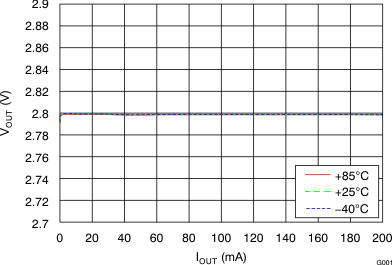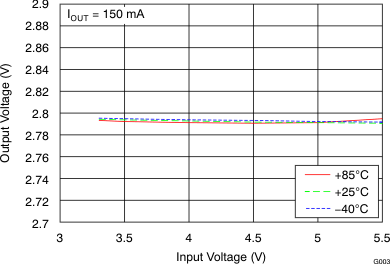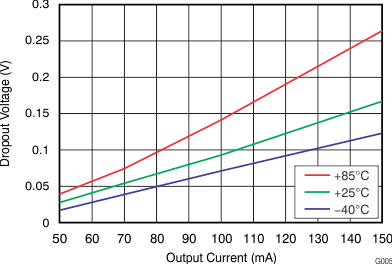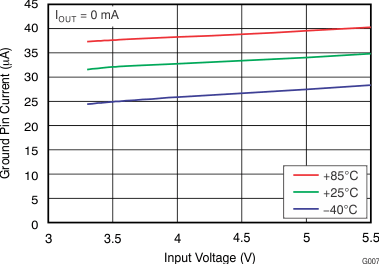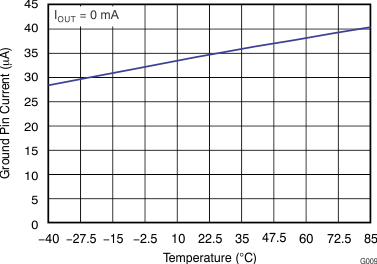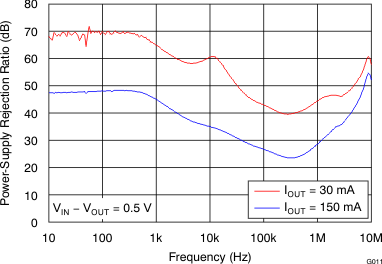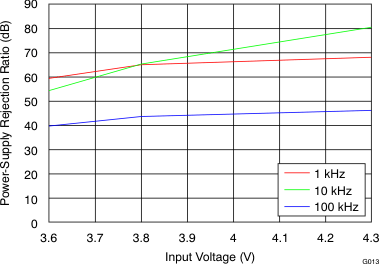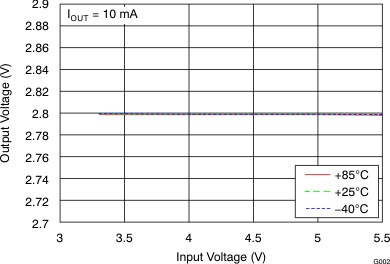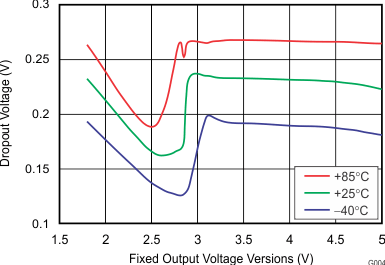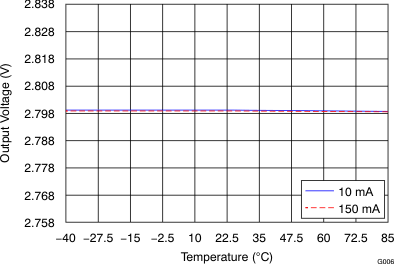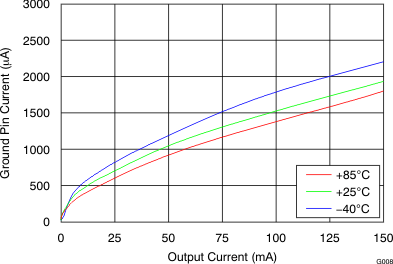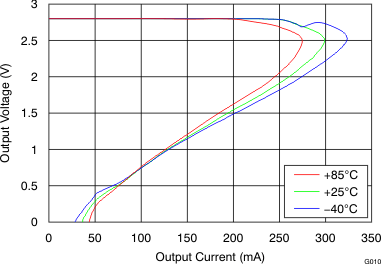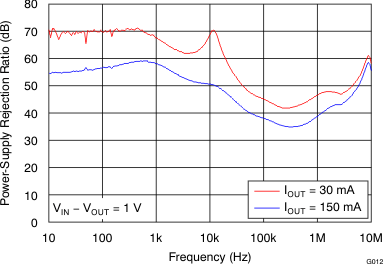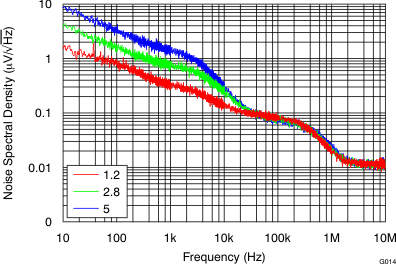ZHCS493B October 2011 – April 2016 TLV717P
PRODUCTION DATA.
6 Specifications
6.1 Absolute Maximum Ratings
At TJ = 25°C, unless otherwise noted. All voltages are with respect to GND.(1)| MIN | MAX | UNIT | ||
|---|---|---|---|---|
| Voltage | Input range, VIN | –0.3 | 6 | V |
| Enable range, VEN | –0.3 | VIN + 0.3 | ||
| Output range, VOUT | –0.3 | 6 | ||
| Current | Maximum output, IOUT | Internally limited | ||
| Output short-circuit duration | Indefinite | |||
| Continuous total power dissipation, PDISS | See Thermal Information | |||
| Temperature | Junction, TJ | –55 | 150 | °C |
| Storage junction, Tstg | –55 | 150 | ||
(1) Stresses beyond those listed under Absolute Maximum Ratings may cause permanent damage to the device. These are stress ratings only, which do not imply functional operation of the device at these or any other conditions beyond those indicated under Recommended Operating Conditions. Exposure to absolute-maximum-rated conditions for extended periods may affect device reliability.
6.2 ESD Ratings
| VALUE | UNIT | |||
|---|---|---|---|---|
| V(ESD) | Electrostatic discharge | Human-body model (HBM), per ANSI/ESDA/JEDEC JS-001(1) | ±2000 | V |
| Charged-device model (CDM), per JEDEC specification JESD22-C101(2) | ±500 | |||
(1) JEDEC document JEP155 states that 500-V HBM allows safe manufacturing with a standard ESD control process.
(2) JEDEC document JEP157 states that 250-V CDM allows safe manufacturing with a standard ESD control process.
6.3 Recommended Operating Conditions
over operating junction temperature range (unless otherwise noted)| MIN | MAX | UNIT | ||
|---|---|---|---|---|
| VIN | Input voltage | 1.7 | 5.5 | V |
| VOUT | Output voltage | 1.2 | 5 | V |
| IOUT | Output current | 0 | 150 | mA |
| VEN | Enable pin voltage | 0 | VIN | V |
| TJ | Junction temperature | –40 | 85 | °C |
6.4 Thermal Information
| THERMAL METRIC | TLV717P | UNIT | |
|---|---|---|---|
| DQN (X2SON) | |||
| 4 PINS | |||
| RθJA | Junction-to-ambient thermal resistance | 393.3 | °C/W |
| RθJC(top) | Junction-to-case(top) thermal resistance | 140.3 | °C/W |
| RθJB | Junction-to-board thermal resistance | 330 | °C/W |
| ψJT | Junction-to-top characterization parameter | 6.5 | °C/W |
| ψJB | Junction-to-board characterization parameter | 329 | °C/W |
| RθJC(bot) | Junction-to-case(bottom) thermal resistance | 147.5 | °C/W |
6.5 Electrical Characteristics
At operating temperature range (TJ = –40°C to 85°C), TJ = 25°C, VIN = VOUT(NOM) + 0.5 V or 1.7 V (whichever is greater), IOUT = 10 mA, VEN = VIN, and COUT = 1 µF, unless otherwise noted.6.6 Typical Characteristics
At operating temperature range (TJ = –40°C to 85°C), TJ = 25°C, VIN = VOUT(NOM) + 0.5 V or 1.7 V (whichever is greater), IOUT = 10 mA, VEN = VIN, and COUT = 1 µF, unless otherwise noted.